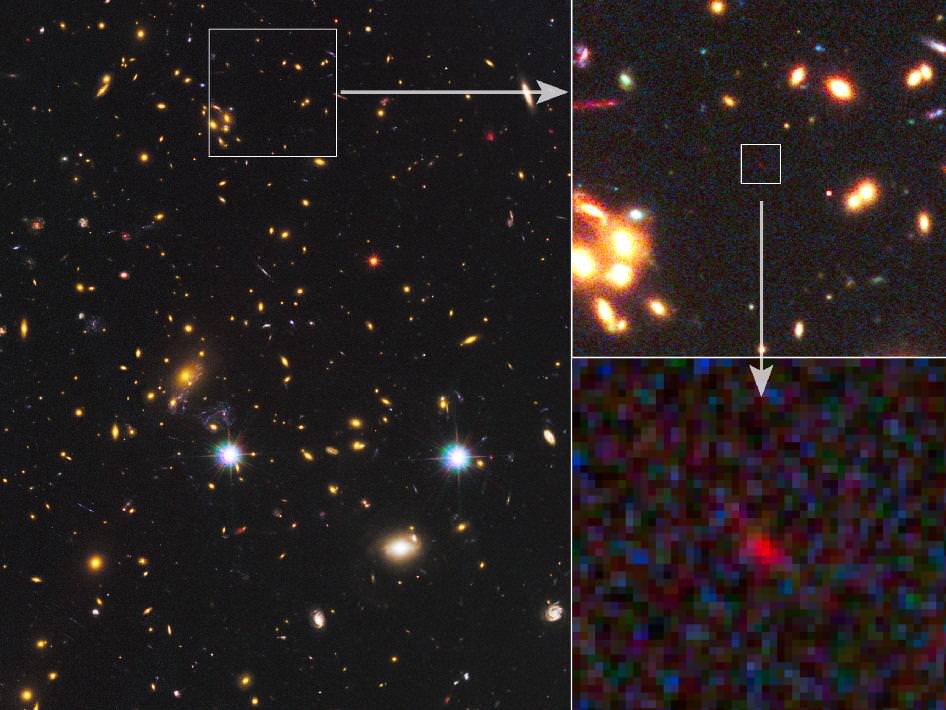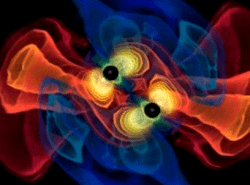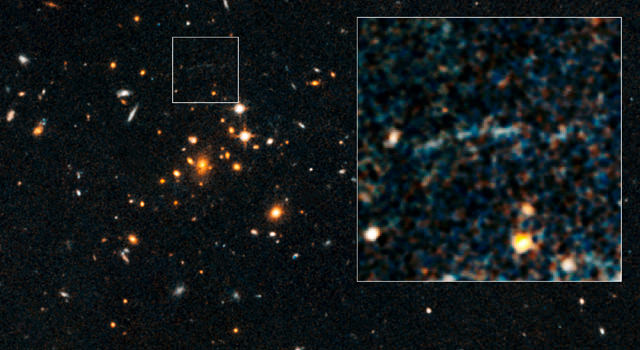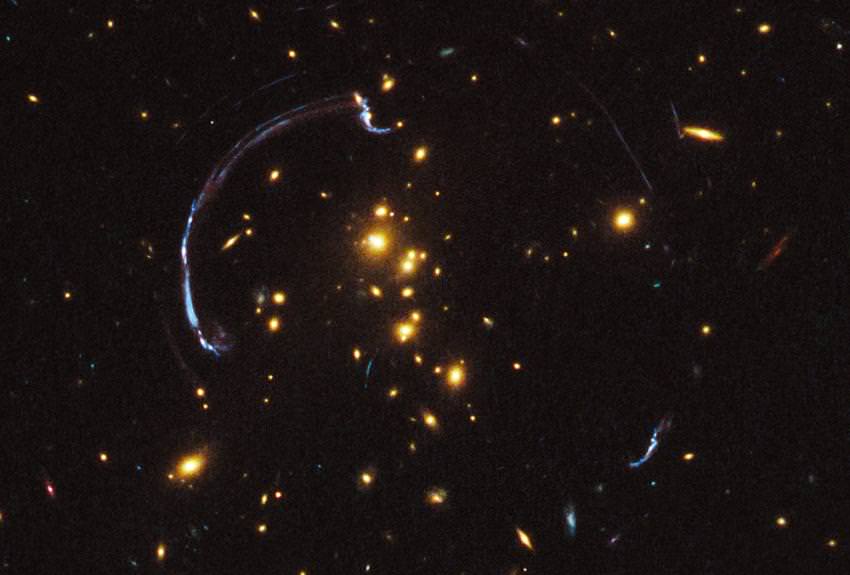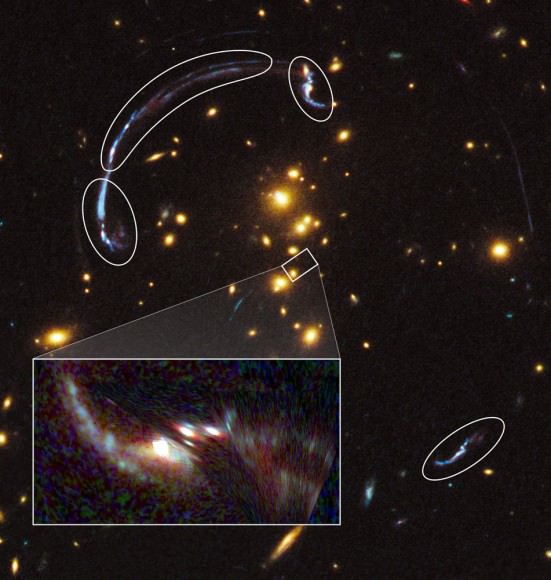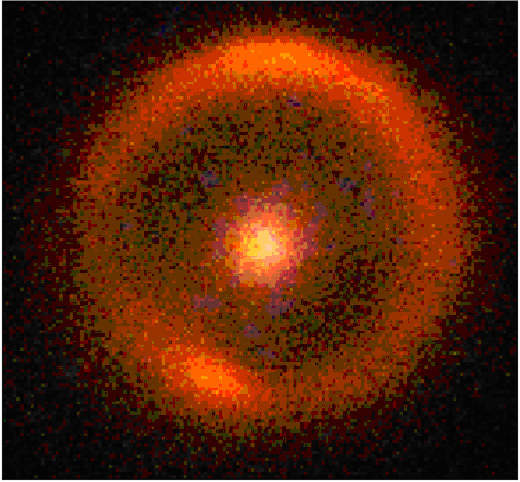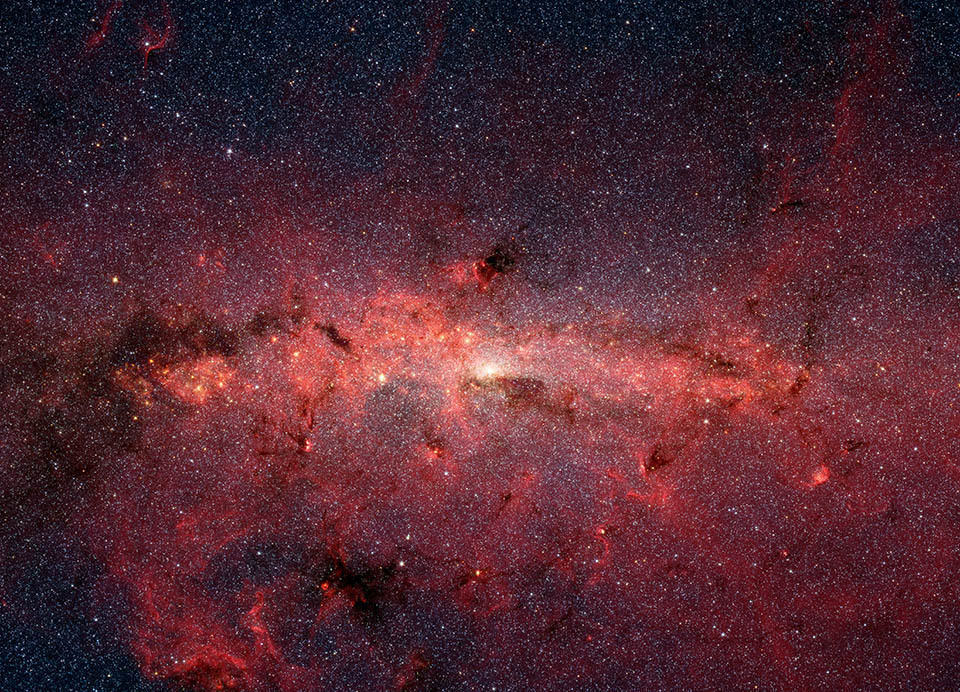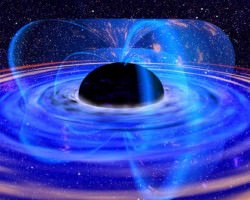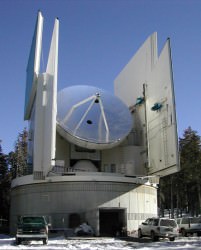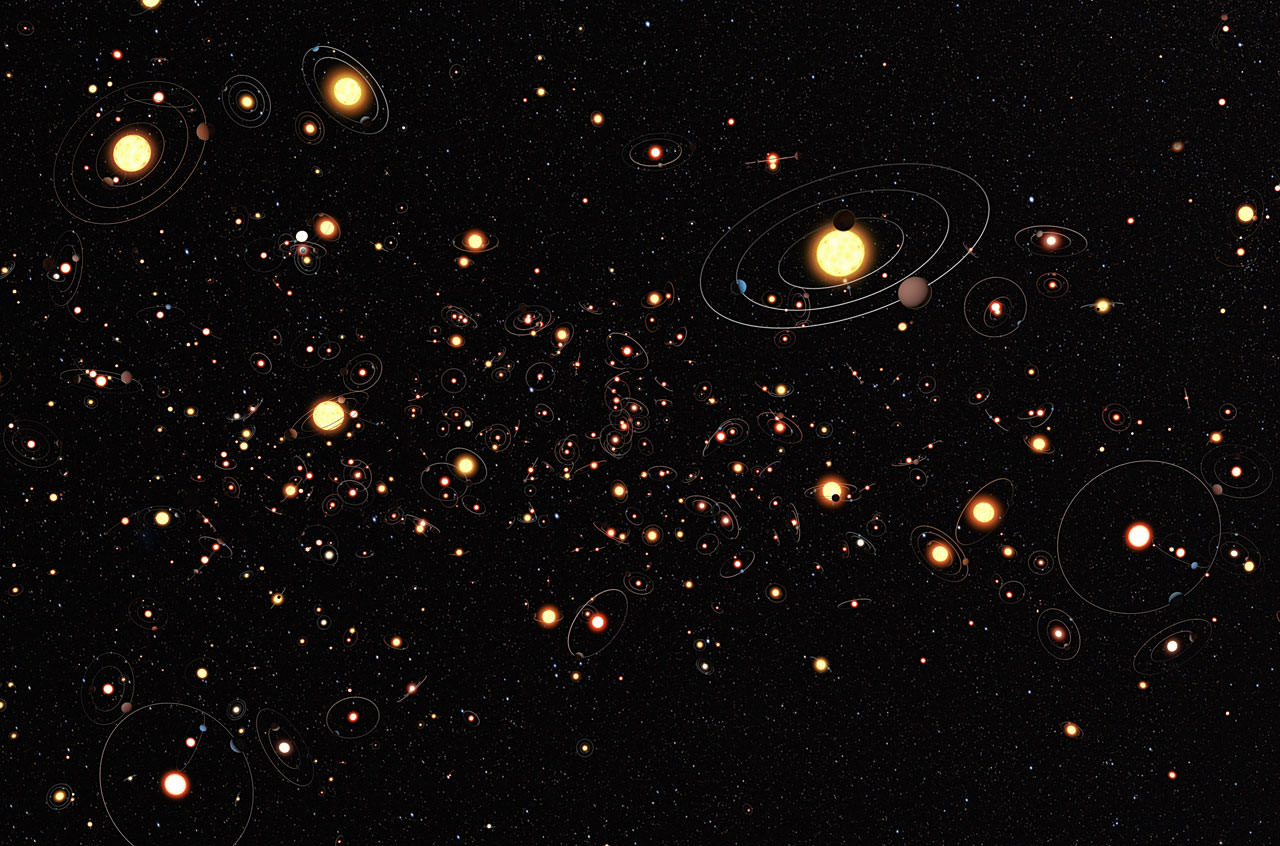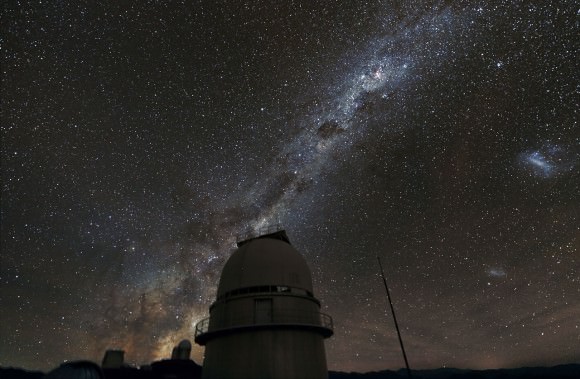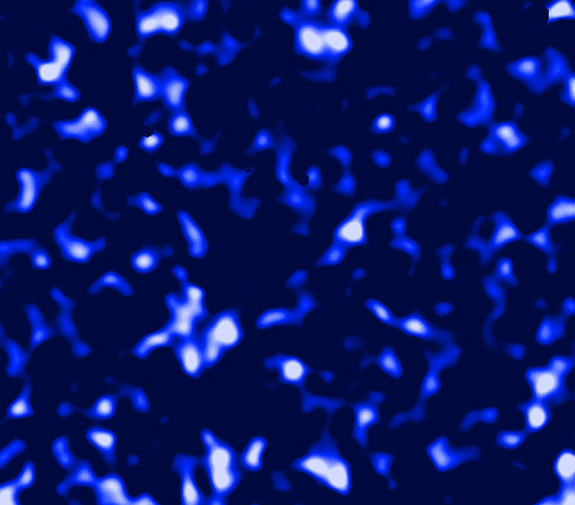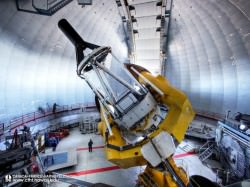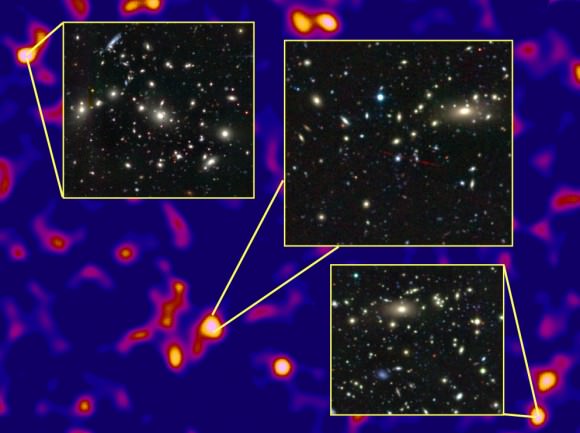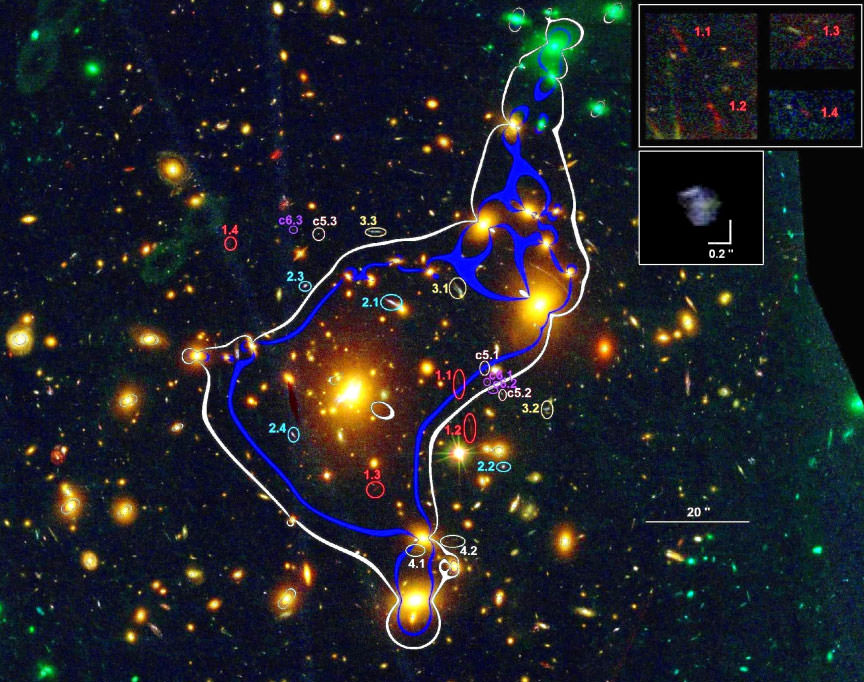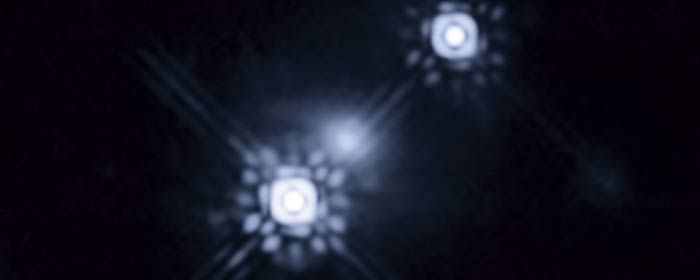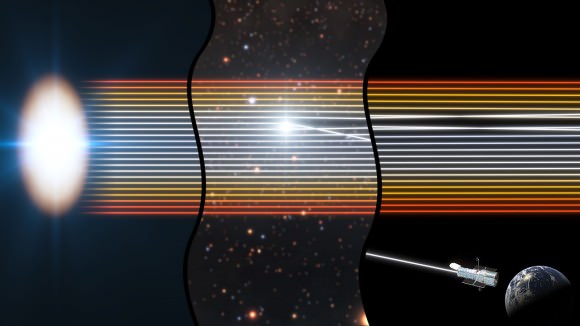In the big image at left, the many galaxies of a massive cluster called MACS J1149+2223 dominate the scene. Gravitational lensing by the giant cluster brightened the light from the newfound galaxy, known as MACS 1149-JD, some 15 times. At upper right, a partial zoom-in shows MACS 1149-JD in more detail, and a deeper zoom appears to the lower right. Image credit: NASA/ESA/STScI/JHU
Take a close look at the pixelated red spot on the lower right portion of the image above, as it might be the oldest thing humanity has ever seen. This is a galaxy from the very early days of the Universe, and the light from the primordial galaxy traveled approximately 13.2 billion light-years before reaching the Spitzer and Hubble space telescopes. The telescopes — and the astronomers using them — had a little help from a gravitational lens effect to be able to see such a faint and distant object, which was shining way back when our Universe was just 500 million years old.
“This galaxy is the most distant object we have ever observed with high confidence,” said Wei Zheng, a principal research scientist in the department of physics and astronomy at Johns Hopkins University in Baltimore who is lead author of a new paper appearing in Nature. “Future work involving this galaxy, as well as others like it that we hope to find, will allow us to study the universe’s earliest objects and how the dark ages ended.”
This ancient and distant galaxy comes from an important time in the Universe’s history — one which astronomers know little about – the early part of the epoch of reionization, when the Universe began to move from the so-called cosmic dark ages. During this period, the Universe went from a dark, starless expanse to a recognizable cosmos full of galaxies. The discovery of the faint, small galaxy opens a window onto the deepest, most remote epochs of cosmic history.
“In essence, during the epoch of reionization, the lights came on in the universe,” said paper co-author Leonidas Moustakas, from JPL.
Because both the Hubble and Spitzer telescopes were used in this observation, this newfound galaxy, named MACS 1149-JD, was imaged in five different wavebands. As part of the Cluster Lensing And Supernova Survey with Hubble Program, the Hubble Space Telescope registered the newly described, far-flung galaxy in four visible and infrared wavelength bands. Spitzer measured it in a fifth, longer-wavelength infrared band, placing the discovery on firmer ground.
Objects at these extreme distances are mostly beyond the detection sensitivity of today’s largest telescopes. To catch sight of these early, distant galaxies, astronomers rely on gravitational lensing, where the gravity of foreground objects warps and magnifies the light from background objects. A massive galaxy cluster situated between our galaxy and MACS 1149-JD magnified the newfound galaxy’s light, brightening the remote object some 15 times and bringing it into view.
Astronomers use redshift to describe cosmic distances, and the ancient but newly-found galaxy has a redshift, of 9.6. The term redshift refers to how much an object’s light has shifted into longer wavelengths as a result of the expansion of the universe.
Based on the Hubble and Spitzer observations, astronomers think the distant galaxy was less than 200 million years old when it was viewed. It also is small and compact, containing only about 1 percent of the Milky Way’s mass. According to leading cosmological theories, the first galaxies indeed should have started out tiny. They then progressively merged, eventually accumulating into the sizable galaxies of the more modern universe.
The epoch of reionization refers to the period in the history of the Universe during which the predominantly neutral intergalactic medium was ionized by the emergence of the first luminous sources, and these first galaxies likely played the dominant role in lighting up the Universe. By studying reionization, astronomers can learn about the process of structure formation in the Universe, and find the evolutionary links between the smooth matter distribution at early times revealed by cosmic microwave background studies, and the highly structured Universe of galaxies and clusters of galaxies at redshifts of 6 and below.
This epoch began about 400,000 years after the Big Bang when neutral hydrogen gas formed from cooling particles. The first luminous stars and their host galaxies emerged a few hundred million years later. The energy released by these earliest galaxies is thought to have caused the neutral hydrogen strewn throughout the Universe to ionize, or lose an electron, a state that the gas has remained in since that time.
The paper is available here (pdf document).
Source: JPL

